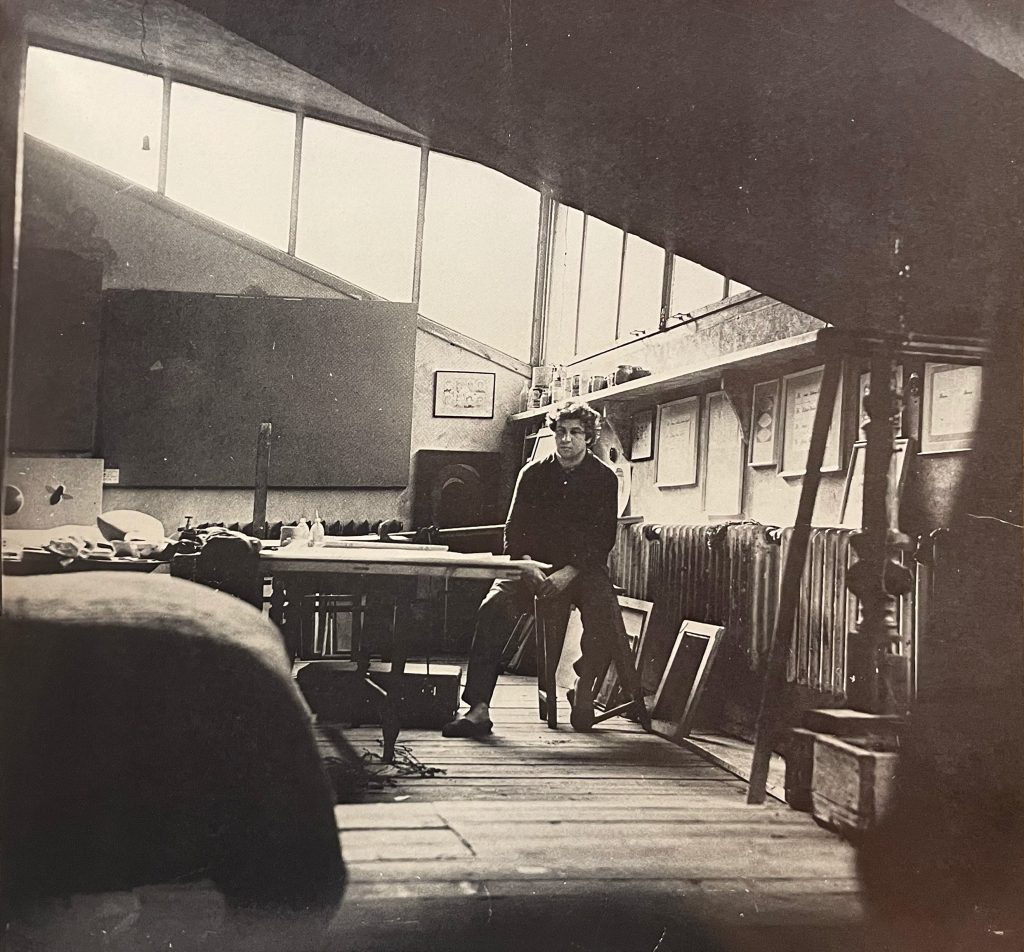Death of the artist Ilya Kabakov
|||||||||||
Russian-born artist Ilya Kabakov recently passed away, on May 27, 2023, at the age of 89. Supported since the 1970s by Dina Vierny, we take a look back at his history and links with the gallery.
Kabakov was born in 1933 in Dniepropetrovsk in the Soviet Union (now Ukraine). He studied graphic arts at Moscow’s Surikov Institute from 1951, graduating six years later. The political climate prevented the artist from showing his work to the public, as this was a privilege enjoyed only by members of the Union of Soviet Artists.
Nevertheless, in 1959, he became a “candidate member” of the Union of Soviet Artists, which enabled him to obtain a studio, a decent salary and work as an illustrator of children’s books. 1965 marked a turning point: he exhibited abroad for the first time, in Italy, where he presented his Shower Series, interpreted as a critique of Soviet culture. From then on, he was no longer allowed to practice and worked under a pseudonym.
Kabakov’s works seek to convey to the world his experience of life in the Soviet Union. Through a wide variety of media – albums, paintings, installations – he attempts to tell a story: that of a society that has lost all notion of reality. After working on series of large-format paintings, the artist gradually integrates texts, which enrich the meaning of the work before replacing it. Their conceptual nature denounces a Russian society devoid of all logic, and they engage in a direct dialogue with the viewer, who finds himself both disconcerted and concerned.
Although Ilya Kabakov exhibited very little in Moscow, some of his drawings succeeded in crossing borders, enabling him to gain international recognition from the 1970s onwards. Dina Vierny discovered his work in early 1970 and immediately began promoting it. They met during one of the gallery owner’s crucial trips to Russia, where she decided to help and support artists who did not bow to the plastic discipline imposed by socialist realism. She later wrote: “I met Ilya Kabakov in Moscow on the evening of January 16, 1970. From our first meeting, I understood that this artist, unknown in Moscow and forbidden to be exhibited, was one of the most original painters of his generation. I took a keen interest in his work. After 27 years, I’m still interested”.
From the moment they met, she encouraged Kabakov to leave the Soviet Union and gain the recognition he deserved. To this end, she bought a large number of his works and undertook to introduce him to Paris.
Dina Vierny returned from this famous trip with suitcases full of works by Ilya Kabakov, Erik Boulatov, Vladimir Yankilevsky and Oscar Rabin. She exhibited all four of them at her gallery in Saint-Germain-des-Prés in the exhibition “Avant-garde Russe – Moscou 1973”, which had to remain open for six months due to the public response.
In 1985, Dina organized Ilya Kabakov’s very first monographic exhibition, featuring works that had been smuggled out of Russia. The artist left Russia for good in 1987, but Dina Vierny continued to play the role of patron, not only buying, presenting and selling his works, but also building him a studio in her holiday home near Rambouillet, where he created some of his most famous installations, such as the Red Wagon and Dans la cuisine communautaire (the latter is still housed at the Fondation Dina Vierny – Musée Maillol). Smaller versions of the installation were also presented at the gallery in 1993, then at a FIAC. Dina Vierny also took the installation to another continent with an exhibition at the Seibu Museum in Japan.
Kabakov flew to New York in 1992, where his dealer Ronald Feldman presented. A suite of ten installations, Les Dix personnages, including L’homme qui s’est envolé dans l’espace, which was acquired a few years later by the Centre Pompidou.
Since 1993, he and his wife Emilia have been developing increasingly complex installations, celebrated around the world. At the 2014 Monumenta at the Grand Palais, they built the utopian city L’Étrange cité, a global reflection on the way we think about art, culture, everyday life, our present and our future.
During his lifetime, Kabakov enjoyed great success, exhibiting in the world’s greatest museums and events, including the Museum of Modern Art, New York (1991), the Centre Pompidou (1996), the Venice Biennale (1993), the Whitney Biennale (1997), the Garage Museum, Moscow (2008) and the Tate Modern (2018).


